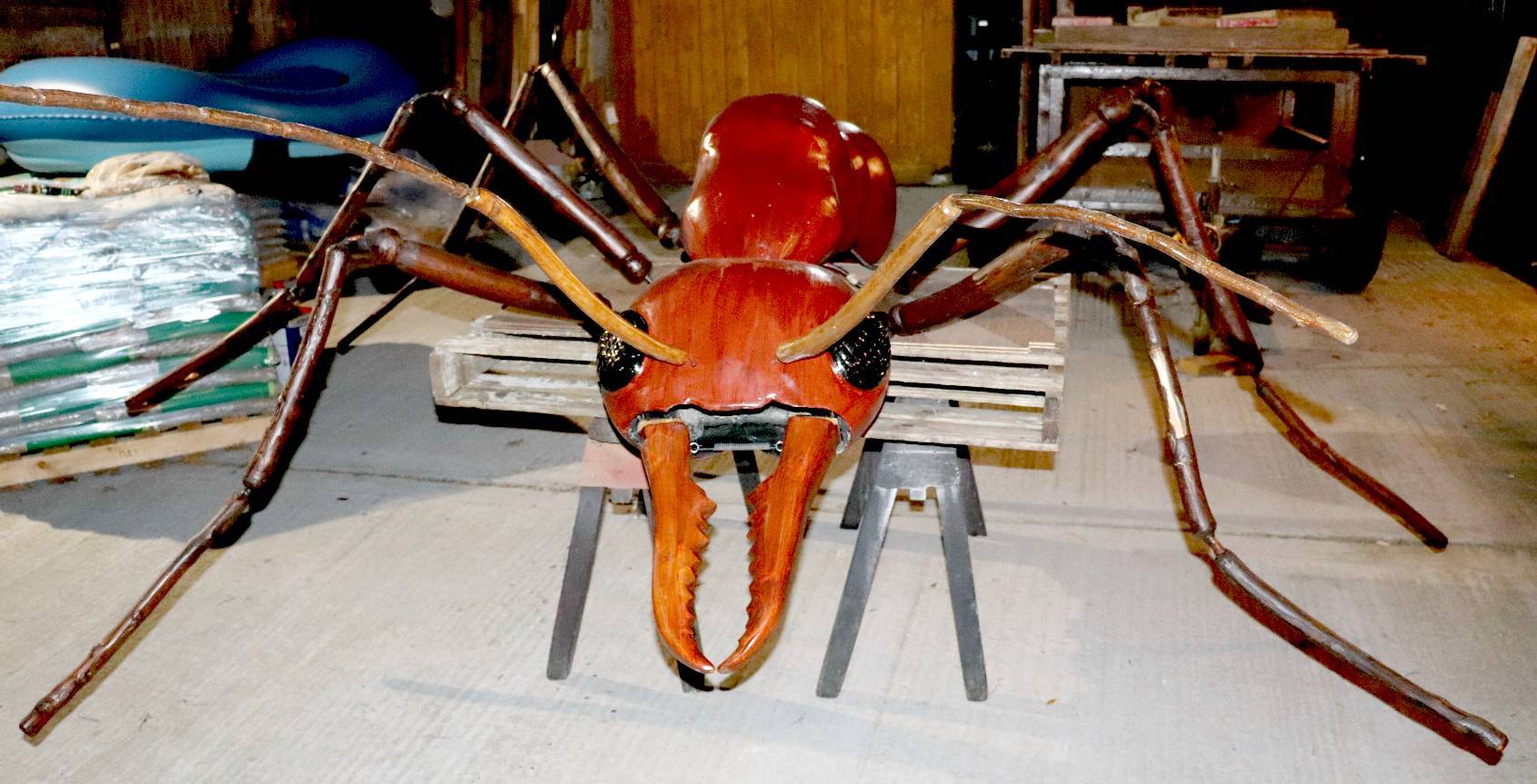|
I N S E C T S
RETURN TO BASECAMP OR EXPLORE OUR PREHISTORIC A-Z
|
|
|
|
|
ARTWORK
- Somewhat better than the huge ants in "Them," but perhaps not as good as
the CGI in Antman. Now a
museum
exhibit in Sussex, England.
The artwork is based on the incredible Australian Bulldog
ant.
INSECT EVOLUTION
INSECT CLASSIFICATION
A startling discovery in the ice, sharp jaws protruding from a block of solid ice.
- Insects have no internal skeleton, instead they are covered in an external shell (exoskeleton) that protects their soft internal organs. - No insect has more than three pairs of legs, except for some immature forms such as caterpillars that have prolegs. These are appendages that serve the purpose of legs. - The typical insect mouth has a pair of lower jaws (maxillae) and upper jaws (mandibles) which are designed to bite. There are many variations to this structure, as many moths and butterflies have tubular sucking mouthparts, many bugs and other blood-sucking insects have sucking stabbing mouthparts and some adult insects
don't have functional mouthparts. - Insects have one pair of antennae located on the head - Most insects have one or two pairs of wings although some insects such as lice, fleas, bristletails and silverfish are completely wingless.
The artwork is also suitable for use in "Jimmy Watson's Magic Dinobot." A proposed network TV serialization, about boy who saves his paper round money to buy himself a robot for Christmas. Then, when assembled, it come to life, to become his friend.
Another title, using the same giant ant special effects artwork as Sectasaur™ is JIMMY WATSON'S MAGIC DINOBOT. This is a children's Christmas story. Far removed from high seas adventures and John Storm (for now).
ANTARCTICA | CHAPTERS | CHARACTERS | DINOSAURS | INSECTS | MOVIES | PLOT OUTLINE
|
|
|
|
|
|
SEE OUR PREHISTORIC NAVIGATOR OR RETURN TO BASECAMP
This website is Copyright © 2023 Cleaner Ocean Foundation and Jameson Hunter Ltd. Copyright is asserted as per sections 77 and 78 of the Copyright Designs and Patents Act 1988. This is a work of fiction. Names and Characters are the product of the authors' imaginations, and any resemblance to any person, living or deceased, is entirely coincidental.
Elizabeth Swann™ and John Storm™ are trademarks. All rights reserved.
|


